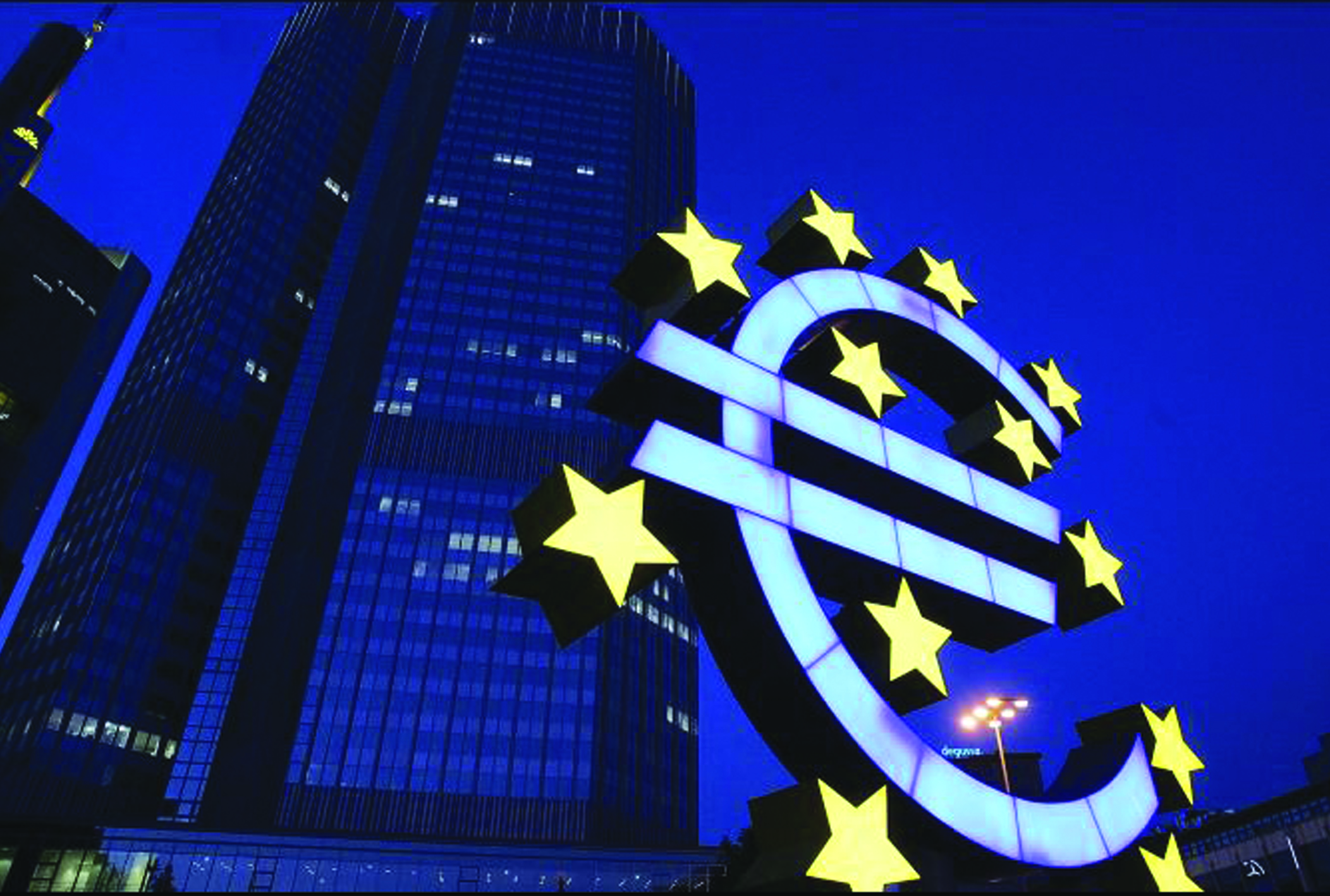The Fall and Rise of the Irish Economy

After six years of struggle, we are finally starting to see signs of economic recovery. The Garda Post caught up with the Chief Economist with Investec Ireland, Philip O’ Sullivan, to discuss the financial outlook.
There is no doubt that Ireland’s economy has suffered significantly for the past six years during the global economic recession. Since the low point of 2008, it has been incredibly difficult for Ireland’s economy on every front. Irish people have seen a significant impact on their disposable income as a direct result of a number of factors including tax increases, wage cuts and significant job losses.
As a result of the banking crisis we have seen a dramatic drop in domestic demand for business and these pressures have been compounded by a very difficult external environment. Internationally, five years after the collapse of Lehman Brothers, the global economic and financial system is still struggling to work through the events that culminated in the collapse of the institutions. Global economic growth has been slow; unemployment is at unacceptably high levels almost everywhere in the developed world; the global banking system is still damaged; sovereign debt levels are very high; and inflationary pressures are non-existent.
The challenge for this year remains to directly and adequately address these problems and put the global economy back on a level and more sustainable economic footing. As for Ireland itself, there are signs that we are slowly but surely getting back on the right economic track. The Irish economy technically did emerge from recession during the second half of last year, jobs are starting to be created, the public are beginning to spend once again, our export sector is performing quite well and business confidence is steadily rising.
From an Irish consumer point of view, the labour market is improving, personal disposable incomes are once again growing and consumer confidence is a high as it has been since the economic collapse. One man who knows all about the financial struggles of the past six years and the economic outlook for the country from now on is Philip O’ Sullivan, who is Chief Economist with Investec Ireland. The Garda Journal sat down with Mr. O’ Sullivan recently to get his perspective on where Ireland currently stands economically, and to discuss the country’s financial outlook going forward.
G.P : How do you think the Irish economy has performed so far in 2014?
P.O’S : I think we’ve seen a very good start to the post-programme era for Ireland, particularly given that we had been through some very tough years before then. While a lot of credit has to go to the heavy lifting completed domestically in terms of tackling issues in the banks, public finances and competitiveness in the economy, we’ve also been helped by a number of external factors. On the latter point, we’ve seen a big turnaround in the outlook for the US, UK and the Eurozone and as we are chiefly an export orientated economy that is very leveraged into what happens globally, I think that is very positive for Ireland.
Another positive is the continued support that we are getting in terms of accommodative monetary policies from the ECB. That is helping to keep down borrowing costs for many households and businesses here.
As I alluded to earlier, there has also been a lot of rebalancing accomplished in Ireland since the crash. A well-documented example of this is the progress that has been achieved in terms of strengthening balance sheets in both the private and public sector.
In the private sector, we’ve seen a significant reduction in household debt. Total household debt has fallen 18.3% from the peak and the ratio of household debt to disposable income has fallen from a peak of 212.5% to 191.8% by the end of last year. Clearly, it’s still very high in comparison to other countries, but it is moving in the right direction. On the corporate side Central Bank data show that similar deleveraging has been the order for some time now.
Ireland’s General Government Debt is likely to have peaked at the end of last year at 123.7% of GDP. Given the ongoing tightening of the fiscal ‘jaws’, the positive growth outlook for the economy and the NTMA’s large cash buffer (which will be run down over time, reducing our borrowing needs), we expect that this year will see debt as a share of GDP reduce for the first time in eight years.
The progress on improving our debt ratios is certainly going to help underpin market confidence in Ireland. As it happens, the Irish ten year bond yield is (as at May 9) already at the lowest level that it has been in the history of the State.
If you cast your mind back to the depths of the crisis, it was fashionable for people to describe the troubled countries around the periphery as the ‘PIIGS’ – Portugal, Ireland, Italy, Greece and Spain. As we have seen with other attempts to reduce Sovereign countries to mere acronyms (Albert Edwards, a strategist with SocGen, memorably dismissed enthusiasm for the ‘BRIC’ economies – Brazil, Russia, India and China – as a ‘Bloody Ridiculous Investment Concept’), lumping distinct countries with different growth drivers into the same pot is too simplistic an approach.
Mercifully, in more recent times the market has demonstrated an appreciation of Ireland’s strong relative performance, with our borrowing costs (as measured by bond yields) improving to being the lowest among the peripheral European countries, having previously been higher than all of them, bar Greece.
Turning to the banking sector, since the tail end of 2012 we have been saying that the ‘vicious circle’ that had existed between the banks and the Sovereign has given way to a new ‘virtuous circle’. The significant turnaround in the outlook for the banking sector is a very positive development for the State, which has seen the value of its investments in the banking sector rise sharply while at the same time its contingent liabilities linked to the sector (liabilities covered by the government guarantee and NAMA senior bonds) have been steadily reducing.
Looking at the wider economy, we see much to be optimistic about. All three PMIs for Ireland – the Services and Manufacturing PMIs produced by Investec and the Construction PMI which Ulster Bank compiles – have been simultaneously in positive territory for eight successive months now, pointing to growth across the majority of the private sector.
We’ve also seen the Live Register fall for 22 months in a row, helped by a resurgence in employment growth (+3.25% y/y in H2 2013 alone). The Irish economy is creating over 1,000 jobs a week and we would expect that to be sustained into 2015 at least.
Of course, there remains a tail of issues that still needs to be fully addressed, chiefly in terms of debt and long-term unemployment. The challenges of both cannot be understated. The momentum behind the economy does, however, give us cause for optimism that both problems can be tackled, provided that the right policy decisions are taken.
G.P : Do you think that Irish banks will be able to fund short term growth as they currently stand?
P.O’S: The previous concerns about the capacity of the industry to adequately lend into the Irish economy have given way to uncertainties around the level of demand for credit. As noted above, many households and businesses are focusing on reducing their borrowings. So, while the improved financial position of the banks has enabled them to make more credit available, the issue has now become one of people’s appetite to take it.
Another banking issue that has emerged more recently is in the property market. There is a relative paucity of units available to buy in some areas, so a disconnect has opened up between the number of mortgage approvals and the numbers actually drawn down. This has kept headline mortgage drawdowns well below ‘normal’ levels.
So, it seems that, as with many other data points around the Irish economy, the headline figures are not really telling you the full story. In this case, we would expect that as the economy continues to recover we should see a return to ‘normal service’ as approvals and drawdowns begin to converge as, for example, ‘frozen supply’ – the term we use for when negative equity is preventing would-be sellers from putting their property on the market – starts to be resolved as prices continue to recover.
G.P : Irish people are starting to feel confident spending their disposable income once again. Do you think that people should remain wary and vigilant with their spending?
P.O’S: We have had a number of years where there have been very elevated levels of ‘precautionary saving’, where people who had the capacity to spend more were unwilling to do so due to an understandable (at the time) fear of the unknown, preferring instead to build up their savings. It is important to make a distinction between this cohort of the population and those whose personal circumstances deteriorated significantly during the downturn.
In the near term, we would expect the former to begin to loosen the purse strings now that confidence has returned to the economy. There has been some evidence of this, with savings rates declining and a rise in purchases of ‘big ticket’ items (car sales rose c. 25% year-on-year in the first quarter of 2014). In saying that, we would not expect to see a return to the some of the profligacy that we would have seen during the Celtic Tiger period. We have experienced one of the most severe recessions of any developed country since the Second World War and the lessons learned from that are going to be felt for years to come. Perhaps we are transitioning from being ‘excessively cautious’ to ‘reasonably cautious’!
On that point, you’re probably going to see some of the most enduring effects of the post-Tiger era in areas such as property investment. I think that we are going to see a new ‘professional era’ in property investment here, with multi-unit managers, prudent levels of borrowing and a demand for yields that more than cover the cost of funding.
G.P: In regard to savings. If someone had €40,000 cash that is earning no interest, what should they do with it?
P.O’S: There is no ‘one size fits all’ answer to this question as everyone’s individual circumstances are different. However, the question is a timely one, given, as you point out, Irish deposit rates are significantly lower today than they have been for some years. This puts a particular onus on people to evaluate their savings and investment choices.
My colleagues in Investec Wealth Management express it better than I could when they say that they “aim to construct diversified, robust portfolios for clients with the goal of producing good, positive risk adjusted returns. We don’t seek to ‘hit the ball out of the park’, we seek to protect and grow clients’ irreplaceable capital in a sound, judicious manner. We believe in the benefits of diversifying between asset classes and within asset classes. We are pretty conservative investment managers”.
Indeed, there are a number of lessons in the above that can be applied to the Irish economy. On the benefits of diversification, Central Bank of Ireland data on household assets and liabilities show that in 2008 property accounted for just under 90% of Irish households’ net worth. Since then it has declined to 69%. Even if we had not experienced a violent reduction in property prices from 2008, I think most people would agree that a c. 90% net exposure to a single asset class is excessive.
Prudence is another important virtue – investing shouldn’t be exciting – it should be boring! I am reminded of the words of the late, great, stock market historian David Schwartz, who advised a reader to: “Tell the children: God bless mommy, God bless daddy, and God bless compound interest”. On the merits of conservatism, we are all aware of the dangers of excessive debt, which are amplified if paired with speculation.
What the optimal mix of cash, equities, bonds, property and alternative assets is for each reader will, as noted above, depend on their individual circumstances. Hence, we would strongly encourage people to seek out professional advice to ensure that they are striking an appropriate balance between risk and potential return.
Philip O’Sullivan is Chief Economist with Investec Ireland


